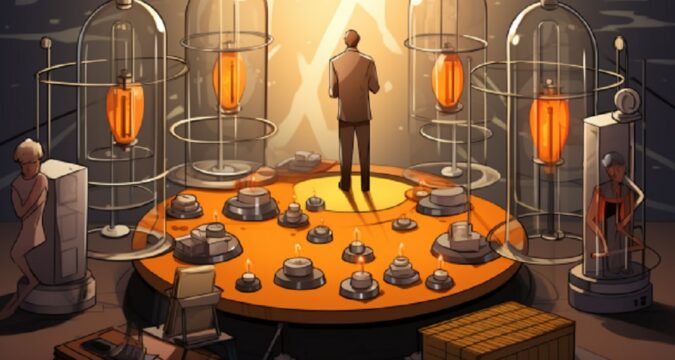
In a recent report, the chief technology officer at Tether Holdings, Paolo Ardoino, gave a hint on the whereabouts of the firm’s bitcoin mining rigs, stating it is somewhere around South America, however, the executive refused to shed more light on the exact location of the mine, despite the platform’s community members clamoring for the information.
According to the report, Paolo Ardoino posted an image on his X ( initially Twitter) page on August 24, displaying a large container with a logo of Tether Energy placed on it. The tweet left many speculators in awe as they wondered what it meant. And to ease their confusion, the CTO explained in his tweets that the image represents a control room at a BTC mining area that the Tether is building, adding that it would switch to full operation when it is completed.
However, many members of the Tether community and other crypto enthusiasts expressed their disbelief in the information revealed by Ardoino, claiming the picture was a mere photoshop as Tether has no mining site. In addition, they challenge the authenticity of the information claiming the CTO should reveal the address, zip code, and other details of the BTC mining site he claimed Tether is building.
However, Ardoino disregarded the demands from speculators that doubted the info released about the mining site. He refused to disclose the full address of the discussed mining site, hinting that it is located somewhere around the South American continent.
The CTO Didn’t Give Details For Security Reasons
According to him, he has resolved not to give further details about the location of the mine to avoid any form of harassment, as a lot of detractors are seemingly obsessed with Tether. However, his response led to further skepticism as a lot of commenters questioned the legitimacy of the CTO’s claims about the mining site.
Some stated that if the firm doesn’t give up the zip code and address of the site, then it is not real. Addressing the doubters who were questioning the photoshopped image the CTO posted, Paolo Ardoino retorted that the post was an intentional media decision of the firm. He explained that the firm decided to brand the logo as they believed that the announcement would be published in newspapers.
However, Ardoino opined that displaying the firm’s logo in the mining areas could jeopardize the security status of the development. He added that fixing the huge logos of Tether on the mining site would not be suitable for the physical privacy of the site’s perspective.
Furthermore, he pointed out that the firm would likely begin operations in the Bitcoin mining sites that it is building by September as he highlighted that the development is progressing well. He added that all team members working on the project are super excited and diligently working continuously, trying to complete the development as soon as possible so operations can start sooner rather than later, according to the report.
Tether Plans To Launch A Mining Software
Meanwhile, the report showed the news about the new development actions of Tether, the issuer of Tether USD (USDT) shortly after some reports revealed that the firm was building a mining software that aimed to create more transparency in the BTC mining ecosystem.
On August 17, the chief technology officer of Tether, Paolo Ardoino, stated in a short interview with a news agency that Tether is planning to develop a mining software, dubbed Moria. According to him, Moria aims to offer a more comprehensive method to analyze data on energy production at BTC mining sites.
In addition, the CTO pointed out that there is a need for improved performance inspection and analytics in the Bitcoin mining industry. Furthermore, Ardoino opined that Moria would offer improved methods to evaluate the performance of a site and its surrounding areas.
According to the CTO, if a particular mining site uses solar or wind energy to power its operations, there are some parameters needed for optimization, such as a forecasted wind speed needed for a particular hour or day in order to overclock many miners to improve their mining work rate and production.


